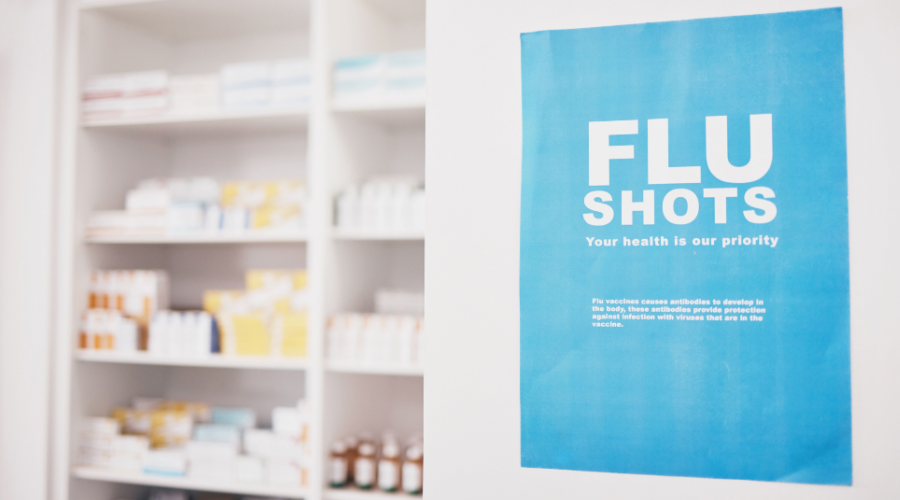In rural areas, healthcare options can be limited, and independent pharmacies have a critical part in providing care.
According to the 2020 NCPA Digest, an independent pharmacy is the only retail pharmacy to serve patients in 20.5 percent of American ZIP codes, most of which are rural. And 77 percent of independent pharmacies serve an area with a population of fewer than 50,000 people.
If you serve a rural community, your pharmacy is probably more accessible for many patients than a doctor’s office. As their most-seen healthcare provider, you’re in a unique position to solve the specific needs of a rural community.
What to Know About Rural Patients
Rural patients face unique challenges when it comes to accessing consistent healthcare. These are some of the hoops that patients have to jump through in order to take care of their physical and mental health.
Distance is a factor
For rural patients, a trip to the pharmacy isn’t typically a quick jaunt around the block. They have to travel long distances to pick up their prescriptions. Since rural populations tend to be older than the rest of the country, there are more patients who may have trouble getting themselves to and from healthcare providers.
Rural areas also don’t have the benefit of public transportation, meaning if patients can’t drive themselves, they will have to make their own private arrangements.
Lower health literacy
Rural patients typically have lower educational attainment than people in metropolitan areas, putting them at risk for lower health literacy. This means they are less likely to seek regular preventive care and have overall poorer health.
There’s also more likely to be a social stigma around certain types of care in rural areas. When patients are from small towns where it feels like everyone knows each other’s business, they might be reluctant to seek care for mental health problems, substance abuse, pregnancy, and more.
More health insurance woes
Among people living outside of metropolitan areas, 9.1 percent are completely uninsured, and 43.4 percent of uninsured rural people say they don’t have a usual source of medical care.
Health insurance premiums are also higher in rural counties than urban counties, and there are fewer sources of low-cost healthcare.
Primary care shortage
Even when rural patients have adequate insurance, that doesn’t necessarily mean they will be able to get regular healthcare. In 2019, 63 percent of Primary Care Health Professional Shortage Areas, which is an area that has a population-to-provider ratio of at least 3,500 to 1, were in rural areas.
Without a sufficient number of providers, even insured rural residents who actively seek out healthcare may not be able to find a provider that works for them.
Food insecure
Rural areas are more likely to be food deserts, which are areas that have few resources for fresh and affordable foods. Instead, rural patients are more likely to rely on more convenient processed foods, resulting in poorer health outcomes.
Food insecurity is also prevalent in rural areas, meaning families can’t always access the food they need, which can lead to more chronic illness.
Less internet access
Rural Americans are less likely to have internet access in their homes than those in metropolitan areas. This affects the way patients interact with their healthcare providers and how they gather information about their health.
Medicare and Medicaid patients make up nearly two-thirds of those without home internet access, and rural patients are more likely to be enrolled in one or both of those programs, according to the Kaiser Family Foundation.
How to Meet Rural Patients’ Needs
You need to become a healthcare destination in order to properly serve your rural patients. Here’s how you can develop services tailored to their needs.
Expand delivery options
As a rural pharmacy, your customer base might be dispersed over a large area, but you should still make an effort to deliver to most of your patients. Designate specific days for different areas so that your driver isn’t hopping from the far southwest corner of your delivery region to the far northeast area in a single afternoon.
Patients who may have to make a long trek to the pharmacy might choose to not get a refill at all if delivery isn’t an option. Serving a wide radius with your delivery services shows rural patients you are committed to their health.
Offer medication synchronization
Medication synchronization is another way to reduce the travel burden for your rural patients. For patients who are on multiple medications, med-sync means they only have to make the trip to the pharmacy once a month instead of several times a month, which means they are more likely to stay adherent and have better health outcomes.
Provide preventive services
Since access to primary care is one of the biggest health challenges in rural America, make sure that you have a full slate of preventive services at your pharmacy.
Here are some you can offer:
- Immunizations
- Point-of-care testing
- Smoking cessation
- Diabetes management
- Lab testing
- Weight loss program
- Health screenings
Be a resource for healthcare knowledge
Since your patients may not have a reliable primary care provider, position yourself as a healthcare expert.
Make sure you’re up-to-date on the most common healthcare challenges facing your community. If your area has high diabetes rates, have a diabetes management plan available. If substance abuse is a common problem, learn the best ways to recognize substance abuse and have resources at the ready for patients who are struggling.
You can also help uninsured or underinsured patients get connected with affordable insurance options, either through Medicare, Medicaid, or the ACA Exchange.
Focus on nutrition
In a food desert, pharmacists should make it a practice to ask patients about their diet. Make recommendations for people to drink water, and advise small steps toward healthier eating habits by educating patients about the macro-nutrients they should be taking in every day.
This can also extend to keeping your front-end stocked with nutritious food options instead of calorie-dense snacks. Use your in-store marketing materials to break down how the food you sell breaks down into different macro-nutrient categories.
Stock up your front end
Every community will have different needs, but for a rural population, your pharmacy might be their most convenient access to grocery items. Get to know your community and learn whether you should be providing a large array of goods — including essentials like toilet paper and food products as well as non-essentials like gifts and cards — that will help your patients save a long trip to another store.
Use multiple information channels
Without consistent home internet access, your patients may be using their smartphones to check in with your pharmacy. Make sure your website is easy to read in mobile format, and if you haven’t already, develop an app so your patients can easily refill prescriptions from their phones.
Recognize that for some patients, even accessing mobile data might be out of reach, so use analog marketing channels like local radio ads or direct mail in addition to digital marketing to make contact with your community.
A Member-Owned Company Serving Independent Pharmacies
PBA Health is dedicated to helping independent pharmacies reach their full potential on the buy-side of their business. Founded and owned by pharmacists, PBA Health serves independent pharmacies with group purchasing services, wholesaler contract negotiations, proprietary purchasing tools, and more.
An HDA member, PBA Health operates its own NABP-accredited secondary wholesaler with more than 6,000 SKUs, including brands, generics, narcotics CII-CV, cold-storage products, and over-the-counter (OTC) products — offering the lowest prices in the secondary market.












